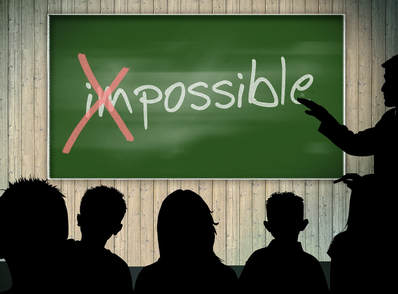 When people say or write things like “nothing is impossible”, they normally mean this as a motivational slogan intended to overcome life’s difficulties. They don’t literally believe that nothing is impossible, but rather that talent, focus, hard work, and dedication can overcome seemingly insurmountable obstacles to achieve success. And you know what? I’m fine with that. It may not be accurate, but I understand that people may need a little oomph in their lives. If some accuracy needs to be sacrificed to help people succeed, I am willing to look the other way, so to speak. However, some people actually believe that the maxim “nothing is impossible” is true, and not only in the realm of personal achievements, but also in the field of science. I have had a few discussions with these mystics that left me wishing that I had applied Alder’s Razor. I have tried to explain that our world functions based on a set of rules that clearly delineate what is and what isn’t possible, and that science is in the business of finding what these rules are. In response to this, I normally get a list of things that scientist thought to be impossible that were later demonstrated to be possible, along with comments like “scientific theories have been proven false again and again” and some interspersed subtle and not so subtle hints that my mind is not sufficiently open. To these criticisms, I answer that science sometimes moves forward by trial and error, and, like these critics point out, scientists have made mistakes or have underestimated the complexity of the phenomena they were studying. But, as more knowledge was generated and explanations were refined, sufficiently developed scientific theories were established that allowed accurate discrimination of the possible from the impossible. Additionally, I have already pointed out not only that the vast majority of scientific theories have not been proven false, but that there are dangers in keeping your mind too open.
Nevertheless, the more important point, that seems to be ignored by the “nothing is impossible” crowd, is that our very lives depend on knowing what is possible and impossible in the world around us. Think about it. When we walk on a cement surface, we know that it will not suddenly turn into quicksand and swallow us up. When we approach a tree, we know it will not suddenly uproot itself and attack us. When a cloud passes over us, we know it will not suddenly turn to lead, fall, and crush us. We have a very clear understanding of how cement surfaces, trees, clouds, and myriads of other things work, and we know with absolute certainty what they can and cannot do. We know what can and cannot happen. We know what is possible and what is impossible. If this understanding of how our world works were false, our lives would be in peril. But our capacity to gain this understanding is nothing new or even limited to the human species. In nature we observe that animals also gain an understanding of how their surroundings work through individual experience and from observing other animals. They develop an understanding of what is edible and what isn’t, of what prey is safe to attack and what prey is dangerous, of what places are safe to be in and which are not, and so on. There is a rhyme and reason to this understanding that animals gain. They grasp that certain things are possible and other not, and they exploit this knowledge to negotiate the complexity of their environments and survive. The animal ancestors of humans acquired this information like other animals through their individual experience and from observing others. However, as ancient humans developed the capacity to think and communicate to an extent that was orders of magnitude higher than that of their animal kin, the knowledge they derived from experience became insufficient. There were many scary things happening in the world that they did not understand and could not control like earthquakes, storms, volcanoes, droughts, pests, and disease that could dramatically affect their lives. And there were also other things like eclipses, comets, shooting stars, or the moon acquiring a red hue that were mysterious. Ancient humans were able to formulate questions. Why did these things happen? Was there something or someone making them happen? How can I prevent bad things from happening? How can I be spared? Ignorance and fear begat superstition and the belief in the supernatural in order to allow humans to make sense of their surroundings and gain a measure of control over their existence. But then some humans started investigating how the world around them worked. They observed. They experimented. They found regularities and patterns. They asked and answered questions and made predictions based on the answers, which they then refined from experience. Science was born. And science was able to deliver explanations regarding the nature and inner workings of those scary things and those mysterious things allowing us to understand them, and in many cases control them, or at least reduce their detrimental effects on our lives. Viewed from this vantage point, science is just merely a more effective way of obtaining the information that we once obtained through experience. Knowledge of what is possible and not possible is key to our survival, and science has been the most successful way in which we gave gained this information. To those who say “nothing is impossible” I just have one word: balderdash! Image from Pixabay is free for commercial use (Creative Commons CC0)
0 Comments
Your comment will be posted after it is approved.
Leave a Reply. |
Details
Categories
All
Archives
June 2024
|
 RSS Feed
RSS Feed